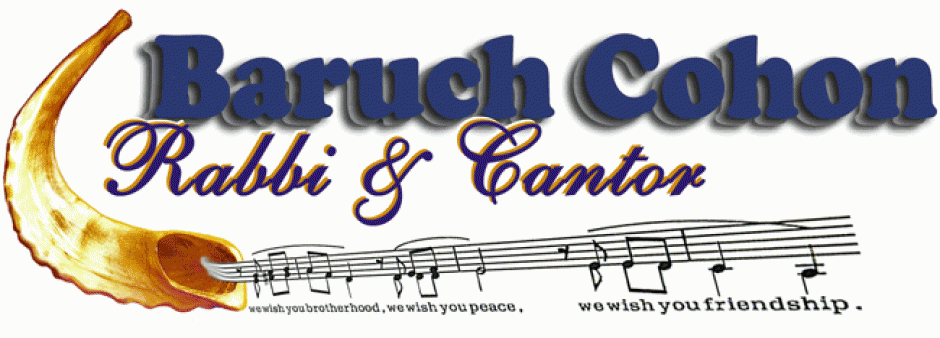Of the various duties assigned to Aaron the High Priest and his sons in the Book of Numbers, this weeks portion Naso contains the one that is clearly the most familiar and also the most outstanding. Sacrificial functions were stopped 2,000 years ago with the destruction of the Temple. Conducting the ordeal of the unfaithful wife, or accepting the Nazirites qualifications — ancient memories now. But the Priestly Benediction — Birkat Kohanim — continues to this day throughout Jewish life, and is borrowed by non-Jews as well. Some of us can remember hearing it pronounced at President Kennedys inauguration.
As one of Aarons descendants — authenticated in fact by the DNA Kohanim project — I welcome the opportunity to join my fellow Kohanim in pronouncing this benediction. While it appears in the daily prayers, we do not formally pronounce it for the congregation daily, except in Jerusalem. Everywhere else, its formal delivery is restricted. Oriental Sephardim (those called eydot hamizrakh, hailing from the Eastern Mediterranean and North African countries) pronounce it at Sabbath morning services. Ashkenazim from Northern and Eastern Europe and the Americas limit its full ceremony to the Musaf services of holidays. The exception to this schedule in some congregations comes on Simhat Torah. Since the Simha — the joyous celebration of Torah — and the reading itself come before Musaf, and since the custom is to give every man in Shul an aliya — an honor to bless the Torah that day during the reading, every honoree gets to make a Lhyim after he comes down from the Bema. That custom includes all the Kohanim, and the Torah expressly bars them from ceremonial action if they are drinking. So in those congregations that follow this custom on Simhat Torah, dukhenen — the public Priestly Benediction — takes place in the early service Shaharit, before any Lhyims.
Not the words alone make this blessing unique, but also the sacred customs and ceremony that goes with them. The words are familiar: “G-d bless you and watch over you. G-d shine His presence toward you and be kind to you. G-d lift His presence to you and give you peace.” According to one commentary, the first lines blessing comes from above to the recipient below. The second line comes straight on the level of the recipient. And the third line comes from below to the recipient above. The Divine Presence is everywhere, so blessing can and does come from all directions.
In the Torah, the sentences before and after these blessings set a tone for their delivery. Introducing the text of the blessing, Moses is commanded: “Speak to Aaron and his sons, and say: Thus shall you bless the people of Israel. Say this to them.” And after the blessing, the Divine voice continues: “Let them place My name on the people of Israel, and I will bless them.” In reality, we Kohanim do not bless anyone by ourselves. We are a conduit for the words of G-d. That concept is dramatized by the customs of Jewish tradition.
Before we can stand in front of the Ark and pronounce the blessings, we have to prepare. We go to the hall of the synagogue where Leviim (descendants of the tribe of Levi) pour water on our hands. When we re-enter the synagogue we take off our shoes, like Moses at the burning bush. Then we take our places facing the Ark, and pull the tallis up over the head. When the cantor sings out the word “kohanim” we recite a prayer acknowledging the sanctity we inherit from Aaron our ancestor, and our duty to bless our people bahavah — with love. As we chant the word bahavah we turn toward the congregation. We pull the tallis forward, spreading our hands under it to hold it in front of our faces, separating the middle and ring fingers to form the traditional sign of the Kohanim with the eight fingers in four pairs signifying the four points of the compass.
Of course the congregation does not see our hands since they are under the tallis. So are our faces. No eye contact here. In fact the custom not to look at the Kohanim has the force of law in traditional congregations. An experience at the Wall in Jerusalem lives in my mind in this connection. It was a weekday during Passover, and we were visiting in the holy city. The newspapers announced the annual event of the Priestly Benediction at the Wall, reviving the ancient pilgrimage festival. My sons and I decided to take part. We were among the last Kohanim to arrive and we found the others lined up three deep all along the Wall. Facing us was a packed crowd that numbered in the tens of thousands. The front row of worshippers was no more than 4 feet from us who were in the front row of Kohanim. Prayer leaders — baaley tfilah — stood at lecterns every 20 or 30 feet facing the Wall, but just one had a microphone, so we all listened to him. As he began the Blessing, I saw from under my tallis a little boy of 3 or 4 staring up at us with innocent curiosity in his big round eyes. As the cantor intoned Yevarekhekha and we all echoed him, I saw the boys fathers hand come around and cover his eyes. Mustnt look.
The very fact that the cantor chants every word first, and the Kohanim repeat it, underscores the fact that the blessing does not come from the Kohanim. As the Kli Yokor explains, the cantors voice represents the transfer of blessing to the Kohanim, making them a kli maley — a full vessel — and then they have what they need to give the people. An empty vessel has nothing to give, but a full vessel can become a conduit, to transfer Divine favor to those who need it.
And dont we all?
After the blessing is completed, the Kohanim say another prayer, individually and quietly. They address the Almighty, reporting that they did what He decreed for them to do, and entreat enduring blessing for the people Israel and the Land of Israel.
As the Kohanim leave the Ark and return to their seats, frequently their neighbors in the congregation will shake their hands and wish them Yasher Koach — well done!
Looking forward to our next opportunity — the holiday of Shavuot, this year June 8th and 9th — I hope all my fellow Kohanim will be able to join in this wonderful ceremony, and merit our neighbors Yasher Koach.

